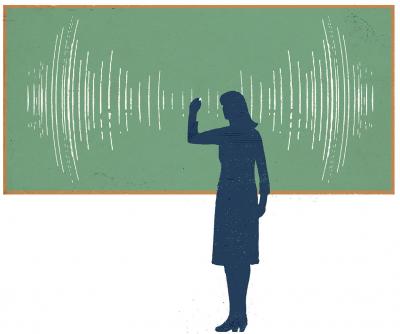BREAK THE SOUND BARRIER?
By Jean Irwin Hatfield, Rotary Club of Folsom, Calif.

When I decided to become a teacher for the deaf, I enrolled in a program at Fresno State. We started with 80 candidates, but by graduation we were down to 13. That’s how intense the program was.
People don’t realize the linguistic challenges of deaf students, especially the trouble they have learning to read. Why is that? Because reading is a sound/symbol system. You don’t read with your eyes but with your ears. This is why blind students, for instance, read at the same level as their sighted peers, while deaf students might graduate from high school reading at a fourth-grade level.
When I started out, 38 years ago, teachers dealt with this problem using workarounds, trying to figure out how to get information to deaf students in ways that didn’t involve reading. Then I heard about a professor in England, David Wood, who was doing groundbreaking work with the deaf.
He was studying artificial intelligence, and he fed a computer all the rules of English and programmed it to generate language. But the language that came out was very strange. He passed it around to his colleagues and someone said, ‘That’s deaf language!’ And he had this epiphany: A computer is deaf! A computer has no ear for language. So he realized that he would have to study how deaf people process language if he wanted to understand how computers process language. That’s how he came to form the Learning Sciences Research Institute at the University of Nottingham.

